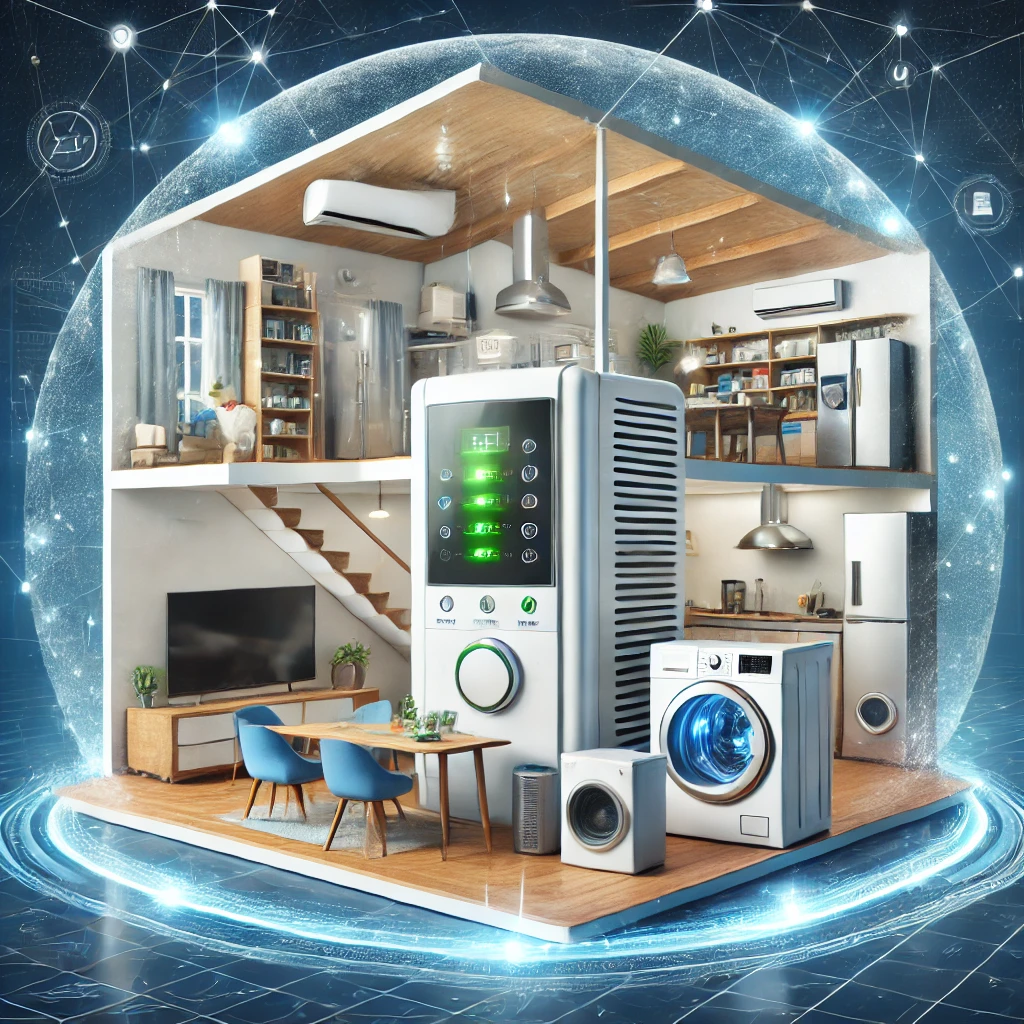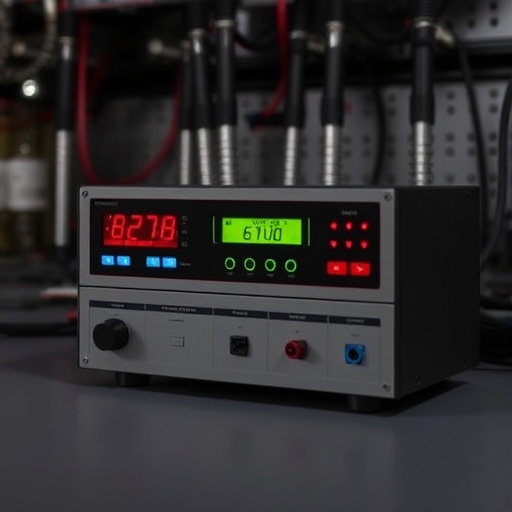No products in the cart.
Understanding the Importance of Voltage Stabilizers: Protect Your Appliances Today
In a world where our lives are increasingly dependent on electronic devices, ensuring a stable power supply is more critical than ever. Voltage fluctuations—those sudden spikes and drops in electrical current—can wreak havoc on your appliances, leading to costly repairs or even complete breakdowns. This is where voltage stabilizers come into play. These unsung heroes of electrical safety protect your devices from damage, extend their lifespan, and save you money in the long run. In this blog post, we’ll explore the importance of voltage stabilizers, how they work, and why they are essential for every home and business.
What Are Voltage Stabilizers and How Do They Work?

Voltage stabilizers are devices designed to maintain a consistent voltage level for your appliances, regardless of fluctuations in the incoming power supply. They act as a buffer between your devices and the electrical grid, ensuring that the voltage remains within a safe range.
When the input voltage is too high or too low, the stabilizer automatically adjusts it to a stable output voltage. For example, if the input voltage drops to 180V, a stabilizer can boost it to the standard 220V-240V required by most appliances. Conversely, if the voltage spikes to 260V, the stabilizer will reduce it to a safe level.
This seamless adjustment protects your appliances from damage caused by overvoltage, undervoltage, and other electrical anomalies. Without a voltage stabilizer, your devices are left vulnerable to the unpredictable nature of power supply, especially in regions with unstable grids like Nigeria.
Why Voltage Stabilizers Are Essential for Your Appliances
1. Protection Against Power Surges and Drops
Power surges and drops are common in areas with unreliable electricity. These fluctuations can damage sensitive components in your appliances, such as circuit boards and motors. A voltage stabilizer acts as a shield, absorbing these irregularities and ensuring a steady flow of power.
2. Extended Appliance Lifespan
Appliances like refrigerators, air conditioners, and televisions are significant investments. By maintaining a stable voltage, voltage stabilizers reduce wear and tear on these devices, helping them last longer and perform better.
3. Energy Efficiency
Fluctuating voltage can cause appliances to consume more energy than necessary. A stabilizer ensures that your devices operate at optimal efficiency, reducing energy consumption and lowering your electricity bills.
4. Fire Prevention
Voltage spikes can overheat appliances, increasing the risk of electrical fires. Voltage stabilizers mitigate this risk by preventing excessive voltage from reaching your devices.
Common Appliances That Need Voltage Stabilizer
Not all appliances require a stabilizer, but those with sensitive electronics or motors are particularly vulnerable to voltage fluctuations. Here are some devices that benefit greatly from a voltage stabilizer:
- Refrigerators and Freezers: These appliances run continuously and are highly susceptible to voltage-related damage.
- Air Conditioners: AC units have compressors that can overheat or fail due to unstable voltage.
- Televisions and Home Entertainment Systems: Modern TVs and sound systems have delicate components that can be easily damaged by power surges.
- Computers and Printers: Data loss and hardware damage are common consequences of voltage fluctuations.
- Washing Machines and Dryers: These appliances have motors that can burn out if the voltage is too high or too low.
How to Choose the Right Voltage Stabilizer
Selecting the right voltage stabilizer is crucial for ensuring optimal protection. Here are some factors to consider:
1. Power Rating
The stabilizer’s power rating should match or exceed the total wattage of the appliances it will protect. For example, a refrigerator with a power rating of 300W requires a stabilizer with a capacity of at least 300W.
2. Type of Stabilizer
There are different types of voltage stabilizers, including relay-based, servo-controlled, and static stabilizers. Each type has its pros and cons, so choose one that suits your needs and budget.
3. Voltage Range
Ensure that the stabilizer can handle the voltage fluctuations in your area. For instance, if your voltage typically drops to 160V, choose a stabilizer that can operate effectively at that level.
4. Response Time
A faster response time means better protection for your appliances. Look for stabilizers with a response time of less than 10 milliseconds.
PowerSolutionMall.com’s Stabilizer Sizing Calculator: Your Guide to Perfect Protection
Choosing the right voltage stabilizer can be overwhelming, especially if you’re not familiar with technical specifications. That’s where PowerSolutionMall.com’s Stabilizer Sizing Calculator comes in.
This user-friendly tool takes the guesswork out of selecting a stabilizer. Simply input details about your appliances, such as their power ratings and usage patterns, and the calculator will recommend the ideal stabilizer size for your needs.
For example, if you’re protecting a refrigerator, air conditioner, and television, the Stabilizer Sizing Calculator will determine the total wattage and suggest a stabilizer with the appropriate capacity. This ensures that your appliances are fully protected without overspending on an unnecessarily large stabilizer.
To try it out, visit the Stabilizer Sizing Calculator and take the first step toward safeguarding your devices.
Real-Life Scenarios: How Voltage Stabilizers Save the Day
Scenario 1: Protecting a Home Office
Imagine you’re working from home, and a sudden voltage spike damages your computer and printer. Not only do you lose valuable data, but you also face costly repairs. With a voltage stabilizer, this scenario could have been avoided. The stabilizer would have absorbed the spike, ensuring that your devices remained safe and functional.
Scenario 2: Extending the Life of a Refrigerator
A refrigerator is one of the most expensive appliances in your home. Without a stabilizer, voltage fluctuations can cause the compressor to overheat, leading to premature failure. By installing a voltage stabilizer, you can protect your refrigerator and extend its lifespan by several years.
The Economic and Environmental Benefits of Voltage Stabilizers
Investing in a voltage stabilizer is not just about protecting your appliances—it’s also a smart financial and environmental decision.
1. Cost Savings
By preventing damage to your appliances, stabilizers save you money on repairs and replacements. They also reduce energy consumption, lowering your electricity bills.
2. Reduced E-Waste
Appliances that last longer contribute less to electronic waste, which is a growing environmental concern. Voltage stabilizers help reduce e-waste by extending the lifespan of your devices.
3. Energy Conservation
Stabilizers ensure that your appliances operate efficiently, reducing their overall energy consumption. This not only saves you money but also reduces your carbon footprint.
Conclusion: Don’t Wait Until It’s Too Late
Voltage fluctuations are an invisible threat that can cause significant damage to your appliances and disrupt your daily life. Voltage stabilizers are a simple yet effective solution to this problem, offering protection, efficiency, and peace of mind.
Whether you’re a homeowner looking to safeguard your devices or a business owner aiming to protect your equipment, investing in a voltage stabilizer is a decision you won’t regret. And with tools like PowerSolutionMall.com’s Stabilizer Sizing Calculator, choosing the right stabilizer has never been easier.
Call to Action:
Ready to protect your appliances? Visit PowerSolutionMall.com to explore our range of voltage stabilizers and use the Stabilizer Sizing Calculator to find the perfect fit for your needs. For more information on electrical safety, check out this guide by the Electrical Safety Foundation International (ESFI).



